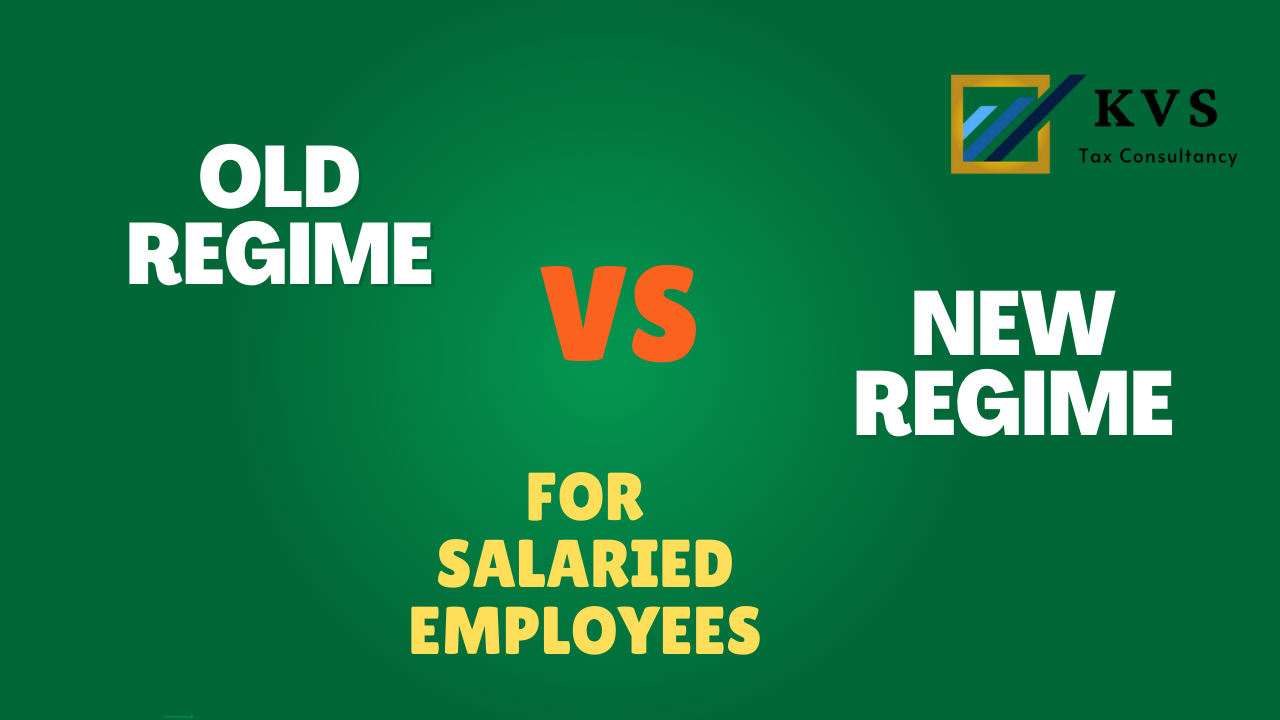
New Tax Regime vs. Old: Which Works Better for Salaried Employees in 2025?
If you’re a salaried employee in India, the question of which tax regime to choose might be stressing you out as you prepare to file your Income Tax Return (ITR). Don’t worry — you’re not alone! With both the old and new tax regimes still in play in FY 2024-25 (AY 2025-26), it’s important to know the difference so you can make the right choice for your financial situation.
Let’s break it down in a simple way.
🔍 What Are These Two Tax Regimes?
✅ Old Tax Regime
- Includes deductions and exemptions like:
- Standard Deduction (₹50,000)
- HRA (House Rent Allowance)
- 80C (Investments like PF, LIC, ELSS – up to ₹1.5 lakh)
- 80D (Health insurance)
- Home loan interest, and more.
- Higher tax rates, but more ways to reduce taxable income.
✅ New Tax Regime (Default from FY 2023-24)
- Lower tax rates
- Fewer or no exemptions/deductions
- Flat, simplified slabs
- You still get the standard deduction of ₹50,000 now (from FY 2023-24 onward)
📊 Quick Comparison of Tax Slabs (FY 2024-25)
| Income Slab | Old Regime Rate | New Regime Rate |
|---|---|---|
| ₹0 – ₹2.5 lakh | Nil | Nil |
| ₹2.5 – ₹5 lakh | 5% | 5% |
| ₹5 – ₹7.5 lakh | 20% | 10% |
| ₹7.5 – ₹10 lakh | 20% | 15% |
| ₹10 – ₹12.5 lakh | 30% | 20% |
| ₹12.5 – ₹15 lakh | 30% | 25% |
| ₹15 lakh and above | 30% | 30% |
🧠 So, Which One Should You Choose?
It depends on how much you invest and what deductions you claim. Here’s a simple rule of thumb:
👉 Choose Old Regime if:
- You claim a lot of deductions (80C, 80D, HRA, home loan interest, etc.)
- Your total deductions are ₹3 lakh or more
- You’re okay with a bit more paperwork
👉 Choose New Regime if:
- You don’t claim many deductions
- Your income is straightforward (salary only, no major tax-saving investments)
- You prefer a hassle-free tax filing process
🧮 Example: Let’s Compare
Say your salary is ₹12 lakh per year.
Under Old Regime:
- After standard deduction, 80C, 80D, HRA, etc., let’s say your taxable income comes down to ₹8.5 lakh.
- Tax: Around ₹75,400 (after rebates)
Under New Regime:
- Standard deduction of ₹50,000 allowed.
- Taxable income = ₹11.5 lakh
- Tax: Around ₹87,500 (after rebates)
👉 In this case, Old Regime is better.
🛠️ Pro Tip: Use Online Tax Calculators
Before filing your ITR, use an official income tax calculator (available on the Income Tax website) to compare both regimes based on your exact salary, deductions, and investments.
📌 Final Thoughts
There’s no one-size-fits-all answer. If you’re investing in tax-saving instruments and making use of exemptions, the old regime might save you more. But if your income is simple and you want to avoid the hassle, the new regime could be your best bet.
Choose wisely — and save smartly!
Want help calculating your taxes? 👉 Drop your salary & deductions and I’ll help you figure it out in seconds!
KVSTAX Consultancy – Your trusted partner for smart tax planning.
📌 Disclaimer
The information provided in this blog is for general guidance and educational purposes only. It should not be considered as professional tax advice or legal opinion. For personalized assistance based on your individual or business tax situation, please consult with a qualified tax consultant or reach out to KVSTAX CONSULTANCY directly.

